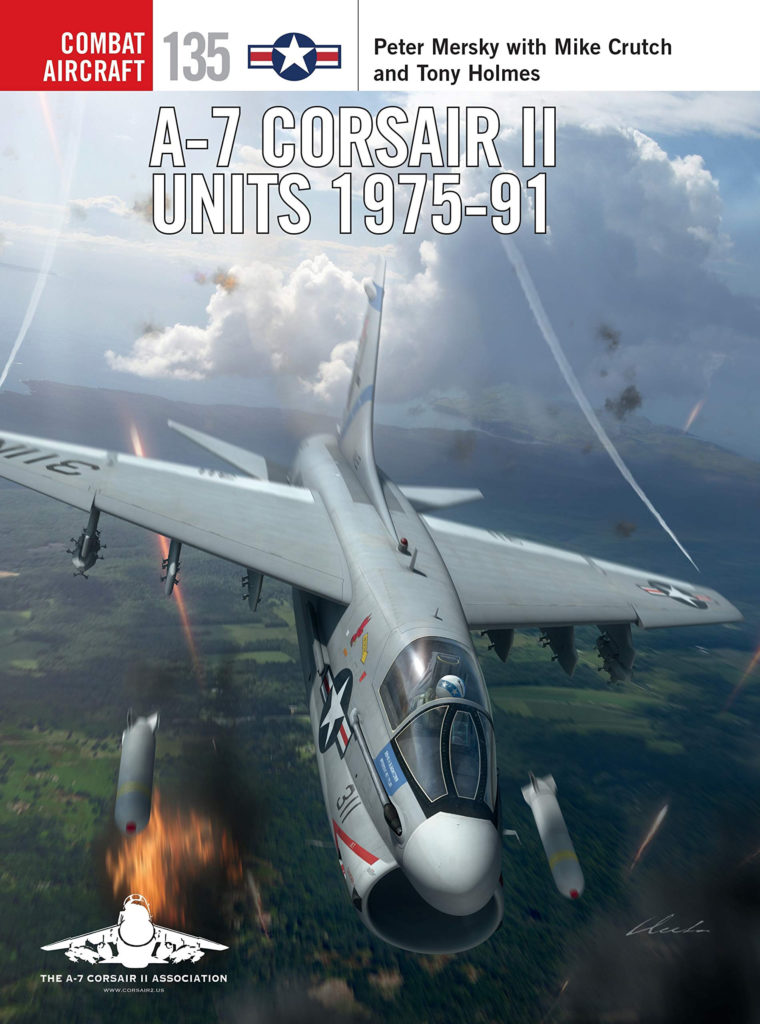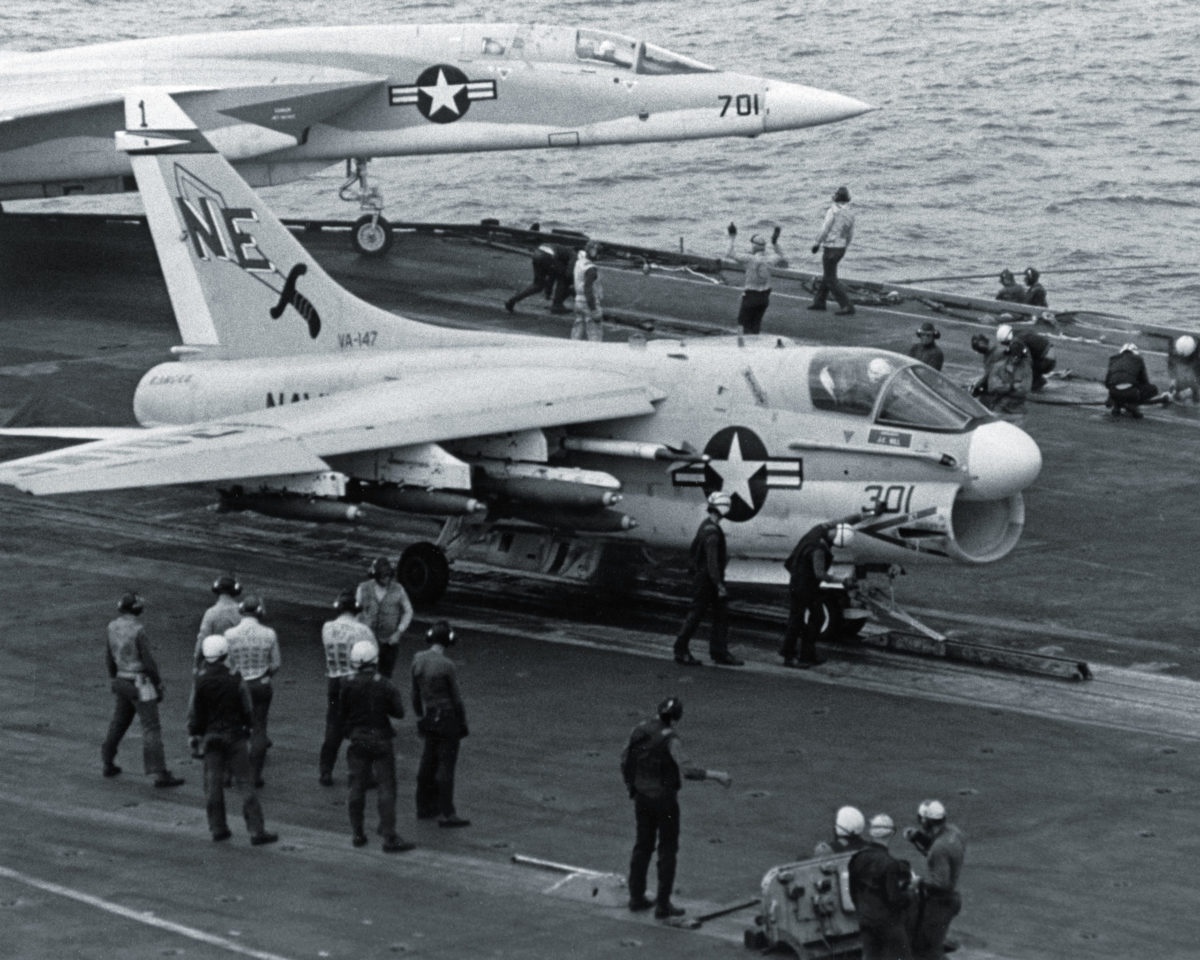The Vought A-7 Corsair II aircraft, which entered service in December 1967 with attack squadron VA-147 aboard carrier USS Ranger, began its combat career over Vietnam while the Douglas A-4 Skyhawk was being phased out. By Jan. 27, 1973, when the Paris Peace Accords ending America’s war in Vietnam went into effect, only one Skyhawk squadron on USS Hancock remained operational.
The Corsair’s exploits during that period were covered in “A-7 Corsair II Units of the Vietnam War,” by Peter Mersky and Norman W. Birzer, a 2004 Osprey publication. In 2021 the rest of this highly effective attack plane’s career finally got its sequel in “A-7 Corsair II Units 1975-91,” by Peter Mersky, with additional material provided by U.S. Navy scholar Mike Crutch and Osprey editor Tony Holmes.
Although the Paris accords halted U.S. naval operations over South Vietnam, attacks on enemy “lines of communications” in Laos began the day after the ceasefire and continued there and in Cambodia. U.S. carrier planes also kept an eye on North Vietnam and escorted helicopters in Operation End Sweep, which retrieved mines that had been laid in Haiphong Harbor and other areas of North Vietnam.

A-7 Corsair II Units 1975-91
by Peter Mersky, Osprey, 2021
If you buy something through our site, we might earn a commission.
When North Vietnam overran the South in 1975, Corsairs served in essentially an escort role as Operation Eagle Pull removed the remaining American personnel from South Vietnam and Operation Frequent Wind added South Vietnamese refugees to the evacuation.
Even the fall of Saigon did not end the Corsair’s role in Southeast Asia. On May 12, 1975, naval units of Cambodia’s Khmer Rouge communist government seized the container ship Mayaguez, provoking a final battle at Koh Tang island, where the Corsair played a major supporting role.
Mersky’s book also provides details and crew accounts of the Corsair’s participation in a variety of post-Vietnam conflicts, including Lebanon in 1982, Grenada in 1983, Libya in 1981 and 1986, and in the Persian Gulf throughout the 1980s.
With the introduction of the more versatile F/A-18 Hornet fighter-bomber in 1983, the A-7 units underwent gradual retirement, leaving only squadrons VA-46 and VA-72 still flying Corsairs when Iraqi dictator Saddam Hussein invaded Kuwait on Aug. 2, 1990. This gave the aging but still reliable Corsair a last hurrah during Operation Desert Storm, which gets extra coverage in this volume.

